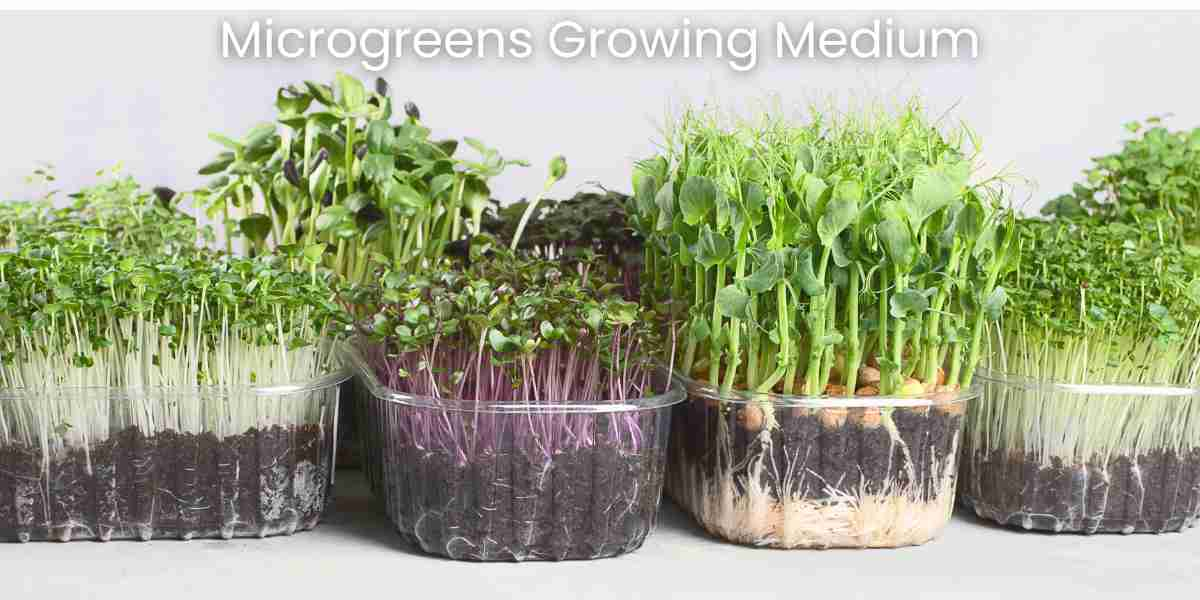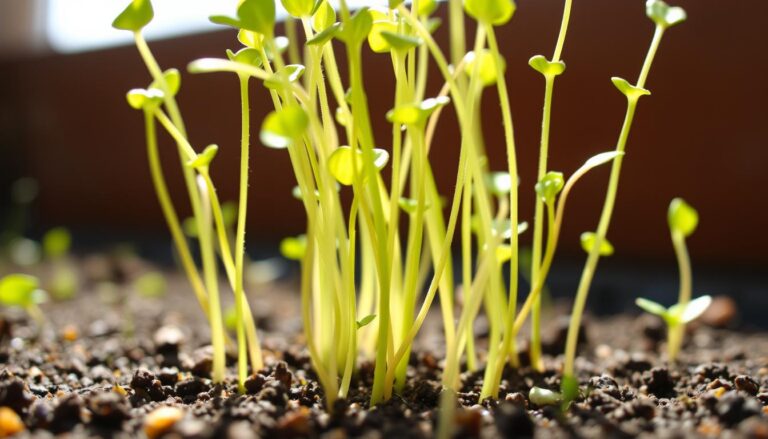Understanding Microgreens Growing Medium Options: Comprehensive Guide

Introduction
If you’re thinking about growing microgreens, the first thing you need to sort out is what to grow them in. The growing medium is super important – it’s basically the base where your microgreens will grow. Many people who start growing microgreens get confused about which growing medium to use, and that’s completely normal. Some try to save money by using regular garden soil, while others spend too much on fancy options they don’t really need.
This guide will help you understand all about microgreens growing medium choices available in the market today. We will look at different options like soil, cocopeat, and even simple things like paper towels. You’ll also learn about which options are budget-friendly and which ones give the best results. Trust me, picking the right microgreens growing medium can be the difference between having healthy, tasty microgreens and ending up with weak plants that don’t grow well.
So let’s get started and figure out which growing medium will work best for your microgreens. Whether you want to grow them in your small apartment or have a proper setup, this guide has got you covered.
What Makes an Ideal Microgreens Growing Medium?
Before we jump into different types of growing mediums, let’s understand what makes a good one. Think of it like choosing the right mattress – it needs to be just right. A good microgreens growing medium should hold water well but not become soggy. Many beginners make the mistake of using mediums that are too wet or too dry.
The perfect growing medium needs these basic things:
- It should be light and fluffy so the tiny roots can easily grow through it
- It must hold enough moisture to keep plants happy between watering
- It shouldn’t contain any harmful chemicals or bacteria that can make people sick
- The medium should be easy to spread evenly in your growing tray
When you’re picking a growing medium, also think about:
- How much it costs per tray
- Whether you can reuse it for next time
- If it’s easily available in your area
- How heavy it will be when wet (important if you’re growing on shelves)
The growing medium you choose directly affects how well your microgreens grow. For example, if you use something too compact, your seeds might have trouble pushing through. Or if the medium doesn’t drain well, your microgreens might get sick from too much water. Some growers learned this the hard way when they used regular garden soil and their plants got infected with mold.
Good quality growing mediums also help your microgreens develop better color and taste. A medium that provides the right support and nutrition will give you microgreens that stand straight and have good flavor. After all, nobody wants microgreens that are falling over or taste bland!
Types of Growing Mediums
Now let’s look at all the different types of growing mediums you can use for your microgreens. There are two main categories – soil-based and soilless options. Both work well, but each has its own benefits and drawbacks.
Soil-Based Options
Potting soil is probably the most common growing medium for microgreens. Many people start with this because it’s easy to find in any garden shop. Good quality potting soil already has the right mix of ingredients and nutrients. Just make sure to get one that’s not too chunky – you want something fine and smooth for microgreens.
Garden soil mixes are another option, but you need to be careful with these. While they’re cheaper than potting soil, they can sometimes have unwanted things like weed seeds or insects. Some growers mix garden soil with coco coir to make it better for microgreens. But if you’re growing microgreens to sell, it’s better to avoid garden soil mixes.
Sterilized topsoil is a safer choice compared to regular garden soil. It’s been treated to kill harmful bacteria and insects. While it’s more expensive than regular soil, it’s still cheaper than many fancy growing mediums. The only problem is that it can become quite compact, so many growers mix it with some perlite to make it lighter.
(Know more about best soil for microgreens.)
Soilless Options
Coco coir is becoming very popular among microgreens growers. It’s made from coconut husks and is excellent at holding water. Many growers like it because it’s light, clean to work with, and can be reused a few times. Plus, it’s easily available in India and quite affordable.
Peat moss is another good option, but it’s usually more expensive than coco coir. It works really well because it holds water nicely while still letting air reach the roots. However, some growers avoid it because it’s not very eco-friendly – it takes hundreds of years to form naturally.
Vermiculite and perlite blends are usually mixed with other mediums rather than used alone. They help improve drainage and keep the growing medium light and fluffy. A common mix is 70% coco coir with 30% vermiculite or perlite.
Hemp mats and jute mats are becoming more common these days. They’re super easy to use – just place them in your tray, wet them, and you’re ready to sow seeds. The best part is there’s almost no mess. The downside? They’re more expensive than soil or coco coir, and you can’t reuse them.
Paper towels are the most budget-friendly option for beginners. Yes, regular kitchen paper towels can work as a growing medium! While they’re not the best for all types of microgreens, they work well for quick-growing ones like radish or mustard. Just remember that paper towels dry out quickly, so you’ll need to water more often.
Some experienced growers even combine different mediums to get the best results. For example, they might use a layer of soil or coco coir with a thin hemp mat on top. This gives them the benefits of both options – good water retention from the soil or coco coir, and the clean, easy harvest from the mat.
(Know more about soilless growing media.)
Comparative Analysis of Growing Mediums
Let’s break down how these different growing mediums compare with each other. This will help you choose what’s best for your situation and budget.
Cost Comparison
Here’s a simple breakdown of costs for a standard 10×20 inch tray:
| Growing Medium | Cost per Tray (₹) | Times Reusable | Cost per Use (₹) |
| Potting Soil | 30-40 | 1-2 times | 20-30 |
| Coco Coir | 25-35 | 2-3 times | 10-15 |
| Paper Towels | 10-15 | Single use | 10-15 |
| Hemp Mats | 80-100 | Single use | 80-100 |
| Jute Mats | 60-70 | Single use | 60-70 |
Water Retention and Maintenance
When it comes to holding water, not all mediums are equal. Coco coir is the champion here – it can hold lots of water while still keeping good air flow. Most growers only need to water once a day with coco coir. Paper towels are at the other end – they dry out quickly and need watering 2-3 times daily.
Soil-based mediums usually need watering once or twice a day, depending on your climate. Hemp and jute mats are somewhere in the middle – they hold enough water for a day but can dry out faster in hot weather.
Reusability and Value for Money
If you’re looking to save money in the long run, coco coir is your best bet. You can reuse it 2-3 times if you clean and sterilize it properly. Potting soil can be reused once, but many growers prefer not to risk it. Mats and paper towels are single-use, which makes them more expensive over time.
Environmental Impact
Looking at the environmental side of things:
- Coco coir is quite eco-friendly as it’s made from coconut waste
- Peat moss has the highest environmental impact as it’s harvested from slow-growing peat bogs
- Paper towels create regular waste but are biodegradable
- Hemp and jute mats are natural and biodegradable
- Soil-based options are sustainable but need proper disposal
Remember, these comparisons are based on general use. Your actual results might vary depending on your growing conditions, local prices, and the types of microgreens you’re growing.
Best Practices for Using Different Growing Mediums
Let’s talk about how to use these growing mediums properly. Many beginners face problems not because of the medium they choose, but because of how they use it. Here are some tried and tested tips that work well.
Preparing Your Growing Medium
Before you start sowing seeds, your growing medium needs proper preparation:
- For soil and coco coir: Add water slowly and mix well until it feels like a squeezed-out sponge
- For paper towels: Just place in tray and spray with water until fully wet but not swimming
- For hemp and jute mats: Soak in water for 10-15 minutes before using
One mistake many new growers make is not leveling the medium properly. Always spread it evenly and press down lightly – you want it firm but not too compact.
Getting the Depth Right
The depth of your growing medium matters a lot:
- Soil and coco coir: Use 1-1.5 inches depth
- Paper towels: 2-3 layers is enough
- Hemp and jute mats: They come in the right thickness
Remember, using too much medium wastes money and can actually make it harder for your microgreens to grow well.
Watering Your Microgreens
Different mediums need different watering styles:
- Bottom watering works best for soil and coco coir
- Top watering or misting is better for paper towels and mats
- Water early morning or evening, not during hot afternoons
A common mistake is overwatering. If you see water collecting in the bottom of your tray, you’re using too much water. The medium should feel damp, not wet.
Avoiding Common Mistakes
- Don’t reuse paper towels or mats – it’s not worth the risk
- Never use garden soil without sterilizing it first
- Don’t press the medium too hard – roots need some air too
- Avoid mixing different batches of used growing medium together
Specialized Growing Medium Combinations
Sometimes using just one type of growing medium isn’t enough. Many experienced growers mix different mediums to get better results. Here are some combinations that work really well.
Custom Mix Ratios
- 70% coco coir + 30% vermicompost: Gives excellent nutrition without being too heavy
- 60% potting soil + 40% perlite: Perfect for better drainage in humid weather
- 50% coco coir + 50% peat moss: Good water retention with nice texture
Season-Specific Combinations
Different seasons need different approaches:
- Summer: Mix extra perlite (about 20%) into your regular medium to improve airflow
- Monsoon: Add more vermiculite to soil mixes to prevent damping off
- Winter: Use straight coco coir or soil as water evaporates slower
Best Combinations for Different Crops
Some microgreens do better with specific mediums:
- Sunflower and pea shoots: Soil-based mixes work best
- Radish and mustard: Paper towels or thin mats are perfect
- Wheatgrass: Pure coco coir gives great results
- Herbs like basil and coriander: Soil-coco coir mix (50-50) works well
Conclusion
Choosing the right microgreens growing medium doesn’t have to be complicated. For beginners, starting with straight coco coir or a basic potting soil mix is a safe bet. These are easy to find, affordable, and give good results. As you get more experience, you can try different combinations to see what works best for your specific needs.
Remember, there’s no single “perfect” microgreens growing medium – it all depends on your situation. Whether you choose soil, coco coir, or even simple paper towels, success comes from following good growing practices and understanding your medium’s needs.






